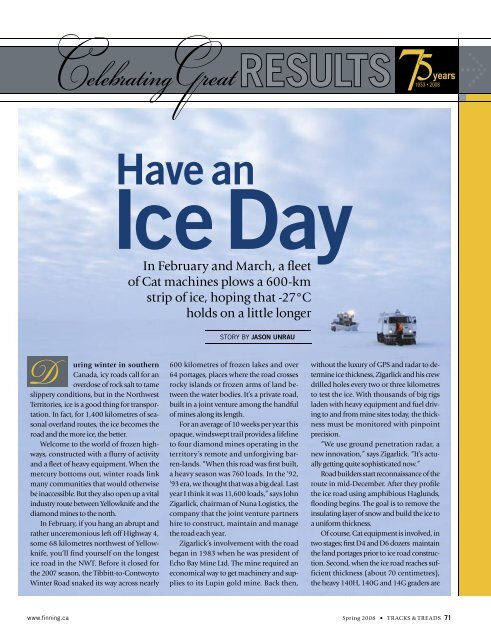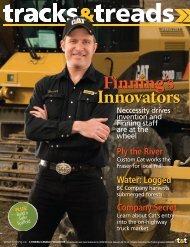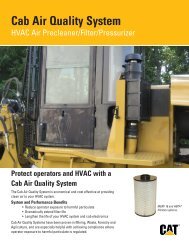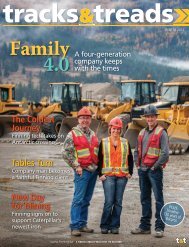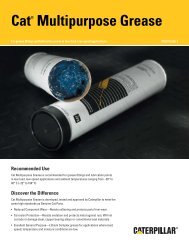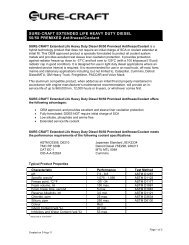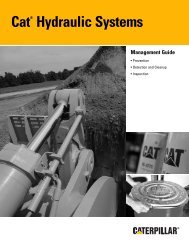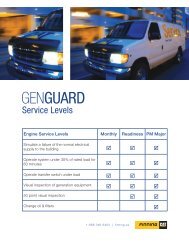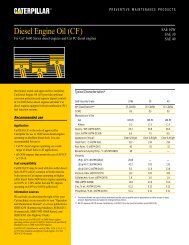Everyday Heroes: Meet Finning's service ... - Finning Canada
Everyday Heroes: Meet Finning's service ... - Finning Canada
Everyday Heroes: Meet Finning's service ... - Finning Canada
Create successful ePaper yourself
Turn your PDF publications into a flip-book with our unique Google optimized e-Paper software.
Have anIce DayIn February and March, a fleetof Cat machines plows a 600-kmstrip of ice, hoping that -27°Cholds on a little longerSTORY BY JASON UNRAUuring winter in southern<strong>Canada</strong>, icy roads call for anoverdose of rock salt to tameslippery conditions, but in the NorthwestTerritories, ice is a good thing for transportation.In fact, for 1,400 kilometres of seasonaloverland routes, the ice becomes theroad and the more ice, the better.Welcome to the world of frozen highways,constructed with a flurry of activityand a fleet of heavy equipment. When themercury bottoms out, winter roads linkmany communities that would otherwisebe inaccessible. But they also open up a vitalindustry route between Yellowknife and thediamond mines to the north.In February, if you hang an abrupt andrather unceremonious left off Highway 4,some 68 kilometres northwest of Yellowknife,you’ll find yourself on the longestice road in the NWT. Before it closed forthe 2007 season, the Tibbitt-to-ContwoytoWinter Road snaked its way across nearly600 kilometres of frozen lakes and over64 portages, places where the road crossesrocky islands or frozen arms of land betweenthe water bodies. It’s a private road,built in a joint venture among the handfulof mines along its length.For an average of 10 weeks per year thisopaque, windswept trail provides a lifelineto four diamond mines operating in theterritory’s remote and unforgiving barren-lands.“When this road was first built,a heavy season was 760 loads. In the ‘92,‘93 era, we thought that was a big deal. Lastyear I think it was 11,600 loads,” says JohnZigarlick, chairman of Nuna Logistics, thecompany that the joint venture partnershire to construct, maintain and managethe road each year.Zigarlick’s involvement with the roadbegan in 1983 when he was president ofEcho Bay Mine Ltd. The mine required aneconomical way to get machinery and suppliesto its Lupin gold mine. Back then,without the luxury of GPS and radar to determineice thickness, Zigarlick and his crewdrilled holes every two or three kilometresto test the ice. With thousands of big rigsladen with heavy equipment and fuel drivingto and from mine sites today, the thicknessmust be monitored with pinpointprecision.“We use ground penetration radar, anew innovation,” says Zigarlick. “It’s actuallygetting quite sophisticated now.”Road builders start reconnaissance of theroute in mid-December. After they profilethe ice road using amphibious Haglunds,flooding begins. The goal is to remove theinsulating layer of snow and build the ice toa uniform thickness.Of course, Cat equipment is involved, intwo stages; first D4 and D6 dozers maintainthe land portages prior to ice road construction.Second, when the ice road reaches sufficientthickness (about 70 centimetres),the heavy 140H, 140G and 14G graders arewww.finning.ca Spring 2008 • TRACKS & TREADS 71


